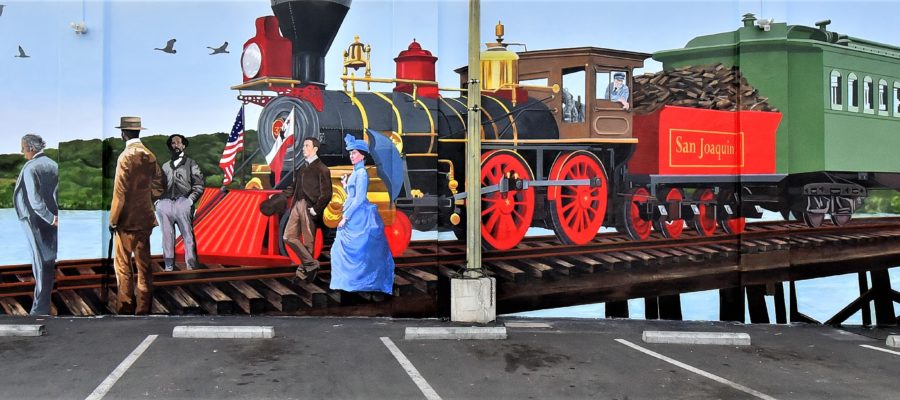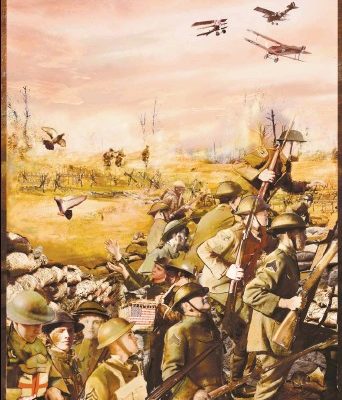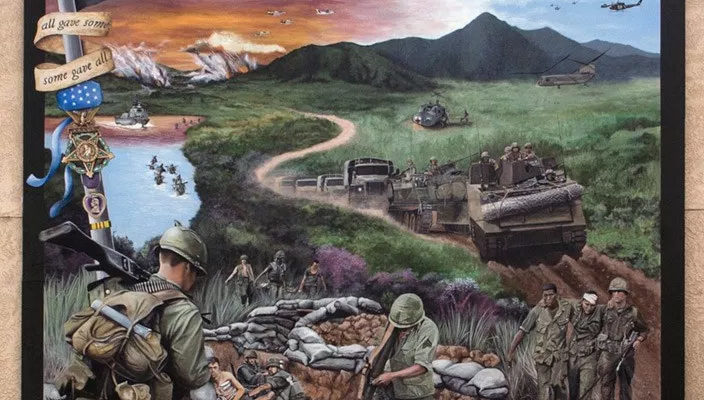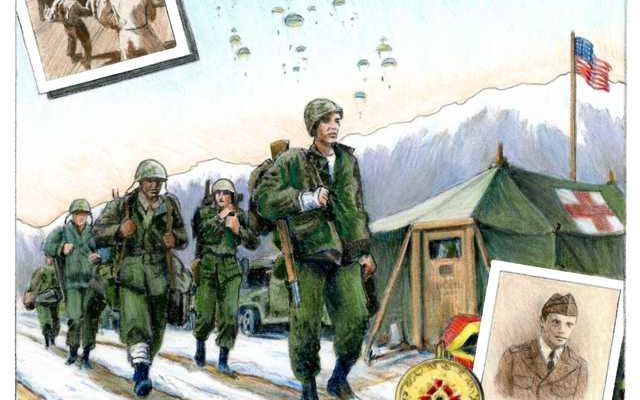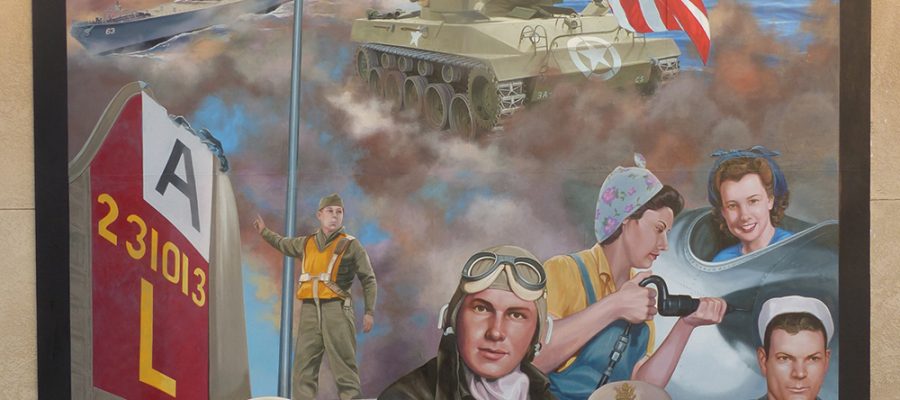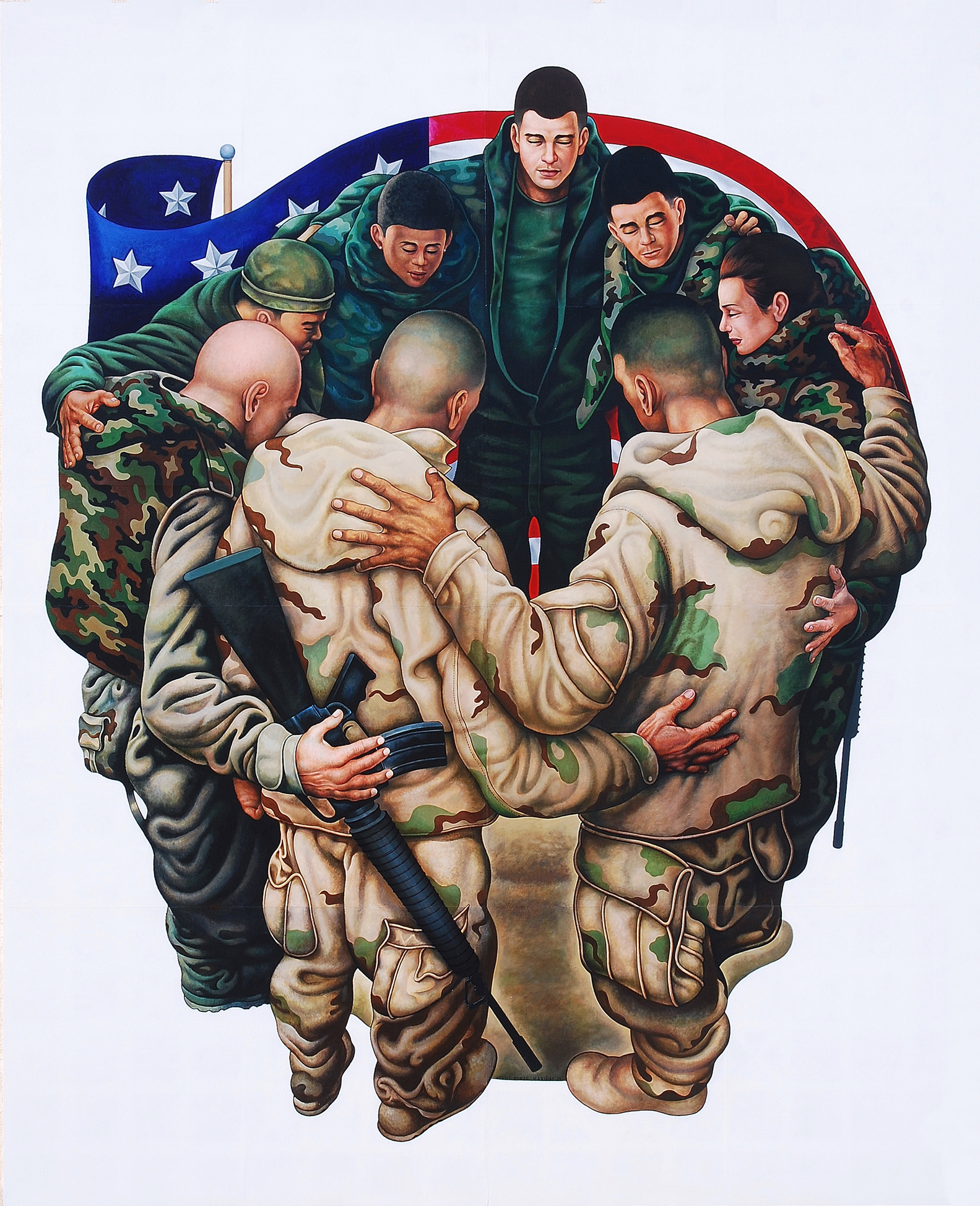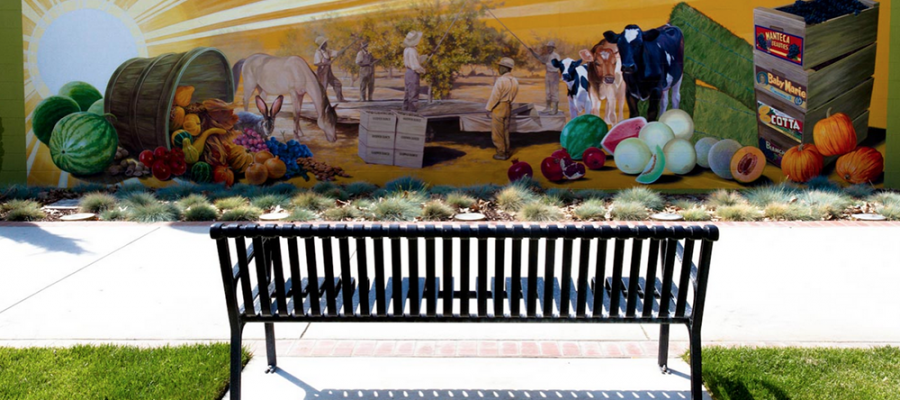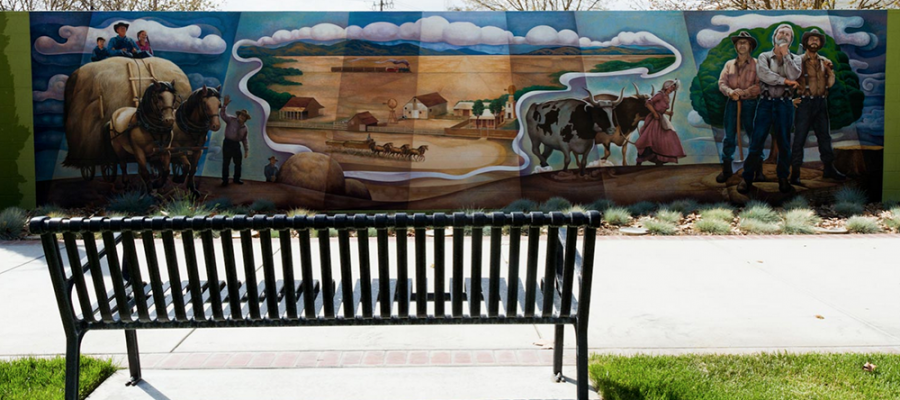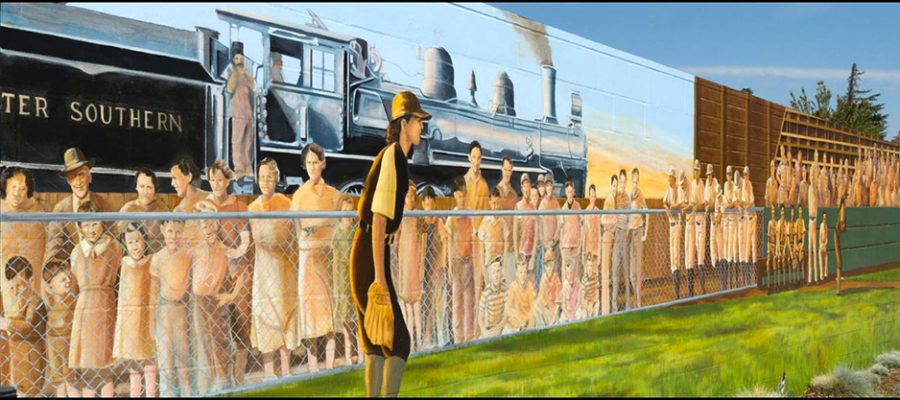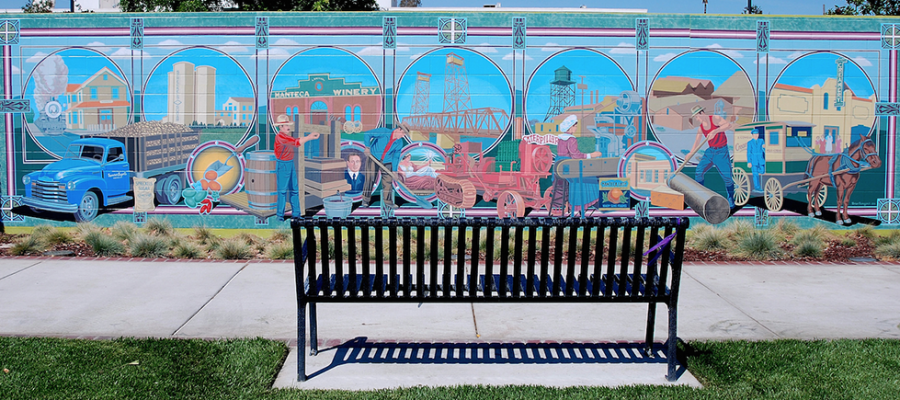This mural was designed to honor men and women from Manteca who have served our country in the Armed Forces, during World War II. It includes portraits of local veterans and civilians who supported the war effort. The five blue stars at the bottom of the mural and the one gold star at the top of the mural have significant meaning. During WWII the practice of displaying the Blue Star Flag was to honor those serving in the Armed Forces. Manteca had the honor of having five brothers serving in WWII. The Gold Star is displayed if a service member is killed in action or dies in service. During a time when Manteca had a population of less than 5000, it is stunning the hundreds of citizens that entered into World War II. This mural was designed to honor the men and women from Manteca who served our country in the Armed Forces as well as those at home who supported the war effort. Our WWII mural features 8 young veterans from Manteca who served during the war; Bud Dickman was an Ace Pilot in the US Army Air Corps, Bill Castillo was in the US Army, Leland Elliott, served in the US Marine Corps, Marie Huarte Esteves served in the US Navy Reserve Waves, John Machado was in the US Navy, Avis Brewster was an US Army Air Corps nurse, Jay Scalf served in the US Coast Guard, and Woodrow Brumley was in the US Merchant Marines. Doris Williams Knodt, a civilian, supported the home front by making parts for the B-17 bomber. Also featured is Rosie the Riveter, a cultural icon, representing the women who worked in the factories and shipyards during WWII. The five blue stars at the bottom of the mural and the one gold star at the top of the mural have significant meaning. During WWII the practice of displaying the Blue Star Flag was to honor those serving in the Armed Forces. Manteca had the honor of having five Duran brothers serving in WWII. The Gold Star is displayed if a service member is killed in action or dies in service. Of the people pictured in the mural, John Machado was killed in the Pacific and left behind a Gold Star family. Like small towns across America, Manteca’s support and participation in World War II was phenomenal..
